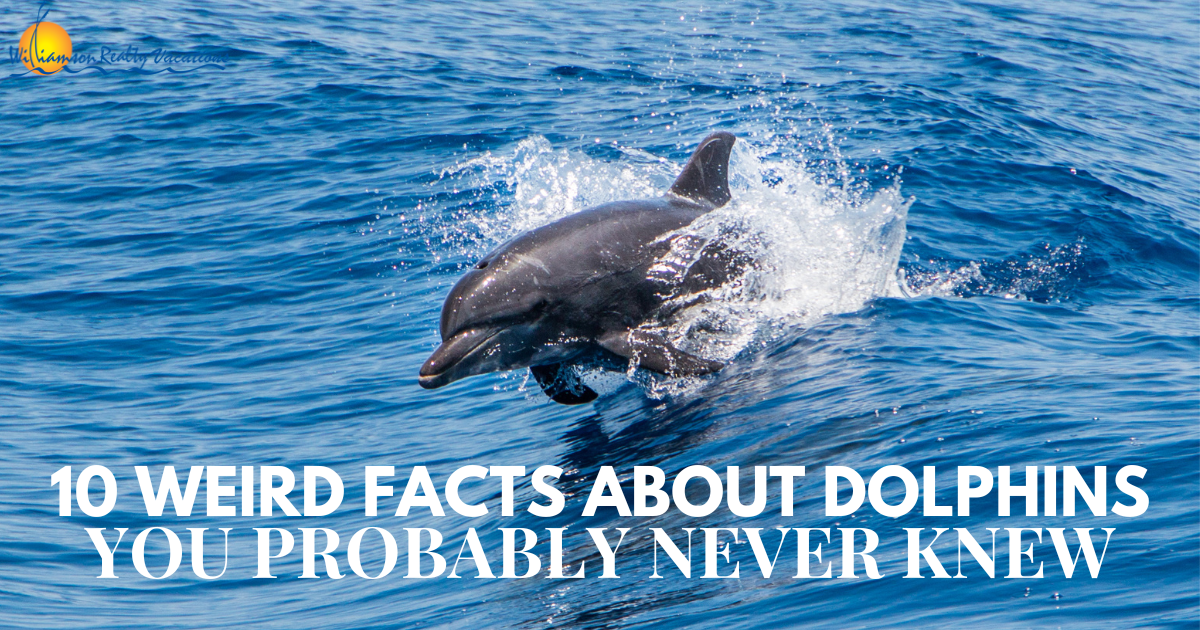How Dolphin Facts Display Their Relevance to Marine Biodiversity
Wiki Article
Study the Ocean: Fascinating Dolphin Realities for Sea Lovers
The globe of dolphins presents a fascinating intersection of knowledge, social habits, and environmental importance. From their complex communication techniques to their impressive problem-solving abilities, dolphins challenge our understanding of pet knowledge.Dolphin Species Variety
Diversity is a characteristic of the dolphin household, including a wide variety of species that exhibit distinct physical attributes, behaviors, and environments. The household Delphinidae, typically called oceanic dolphins, consists of roughly 37 varieties, each adjusted to details eco-friendly niches. For instance, the bottlenose dolphin (Tursiops truncatus) is renowned for its intelligence and versatility, growing in both open and coastal sea environments.In comparison, the orca (Orcinus orca), typically described as the killer whale, is the largest member of the dolphin family members and is identified by its striking black-and-white coloration. Orcas demonstrate complex social structures and searching strategies, showcasing the behavior diversity within the family members. Various other species, such as the rewriter dolphin (Stenella longirostris), are kept in mind for their acrobatic display screens and preference for warmer waters, highlighting the flexibility of dolphins to different aquatic ecological communities.
Additionally, river dolphins, including the pink river dolphin (Inia geoffrensis), inhabit freshwater environments, even more showing the wide-ranging habitats that dolphins inhabit. Dolphin Facts. This incredible diversity not just improves aquatic ecological communities but additionally stresses the value of conservation initiatives to secure these amazing creatures and their atmospheres
Social Behavior and Communication
The detailed social actions and communication approaches of dolphins are important components of their presence, promoting team communication and improving survival. These highly smart aquatic animals show complicated social structures, usually developing husks that can vary from a couple of individuals to over a hundred. Within these teams, dolphins involve in behaviors such as participating hunting, social play, and mutual security, which cultivate solid bonds amongst participants.Dolphins utilize an innovative range of vocalizations, consisting of clicks, whistles, and body language, to convey information and express feelings. Their signature whistles act as unique identifiers, akin to names, enabling individuals to call out to one an additional. This vocal interaction is matched by non-verbal signals, such as jumping, slapping the water, and integrated swimming, which additionally improves their communications.

Special Feeding Behaviors
Distinct feeding behaviors define dolphins, showcasing their flexibility and knowledge in numerous marine atmospheres. These aquatic mammals are recognized for their varied diets, which mainly include fish, squid, and crustaceans. Their searching methods can vary substantially, frequently customized to the certain prey and environmental problems.One notable technique is cooperative hunting, where dolphins operate in teams to herd institutions of fish into tight developments, making it simpler for people to catch their meal. This social behavior not just enhances their feeding efficiency however additionally strengthens social bonds within the case. In addition, dolphins have been observed utilizing a technique called "fish-whacking," where they utilize their tails to stun or confuse fish, helping with easier capture.
One more fascinating feeding habit is echolocation, which allows dolphins to find target even in dirty waters. On the whole, the special feeding behaviors of dolphins highlight their role as proficient predators within the aquatic environment, demonstrating both intelligence and ingenuity.
Intelligence and Issue Addressing
Their knowledge is apparent in their analytical abilities, social interactions, and capacity for knowing. Study has actually shown that dolphins can use devices, such as using aquatic sponges to protect their rostrums while foraging on the seafloor.Moreover, dolphins exhibit innovative communication abilities, utilizing an intricate system of clicks, whistles, and body language. Dolphin Facts. This communication is critical for collaborating group tasks, such as hunting and interacting socially, illustrating their ability to work collectively in the direction of an usual objective. Their ability to understand abstract concepts, consisting of self-recognition in mirrors, even more highlights their cognitive elegance
In regulated studies, dolphins have shown an ability to resolve challenges and execute jobs that call for both memory and vital thinking. These interactions indicate not just knowledge yet likewise a determination to involve with their setting in unique methods. Overall, the cognitive prowess of dolphins places them among the most smart varieties on earth, fostering a deeper admiration for their role in marine ecological communities.
Conservation and Environmental Impact
Preservation efforts aimed at shielding marine environments are important for preserving dolphin populations and their environments. Dolphins are highly conscious environmental adjustments, and their survival is delicately connected to the health and wellness of nautical environments. Overfishing, air pollution, and environment change position significant risks to both dolphins and their atmospheres.Overfishing disrupts the food web, causing a you could check here decrease in prey types necessary for dolphin survival. Additionally, pollutants such as plastics and chemicals collect in marine environments, jeopardizing dolphins with ingestion and bioaccumulation. Raised water temperature levels and ocean acidification, repercussions of climate adjustment, better endanger the delicate balance of aquatic ecosystems, affecting dolphin reproduction and migratory patterns.
By focusing on conservation initiatives, we can make sure that future generations delight in the elegance and vitality of dolphins and the oceans they occupy. Protecting aquatic environments is not simply regarding conserving dolphins; it is regarding maintaining the elaborate web of life that sustains us all.
Verdict
Dolphins exhibit the complexity and splendor of marine life through their varied types, intricate social structures, and advanced cognitive abilities. As crucial elements of aquatic ecological communities, dolphins underscore the need of continuous conservation efforts to secure their habitats.Various other varieties, such as the rewriter dolphin (Stenella longirostris), are kept in mind for their acrobatic displays and choice for warmer waters, highlighting the flexibility of dolphins to numerous aquatic ecological communities.
In general, the special feeding routines of dolphins highlight their function as competent predators within the aquatic environment, demonstrating both knowledge and ingenuity.
Generally, the cognitive expertise of dolphins positions them among the most smart species on the world, promoting a much deeper gratitude for their role in marine ecosystems.

Report this wiki page